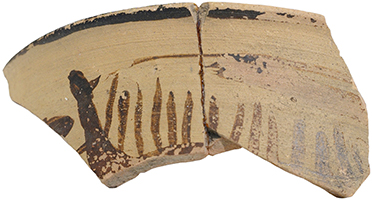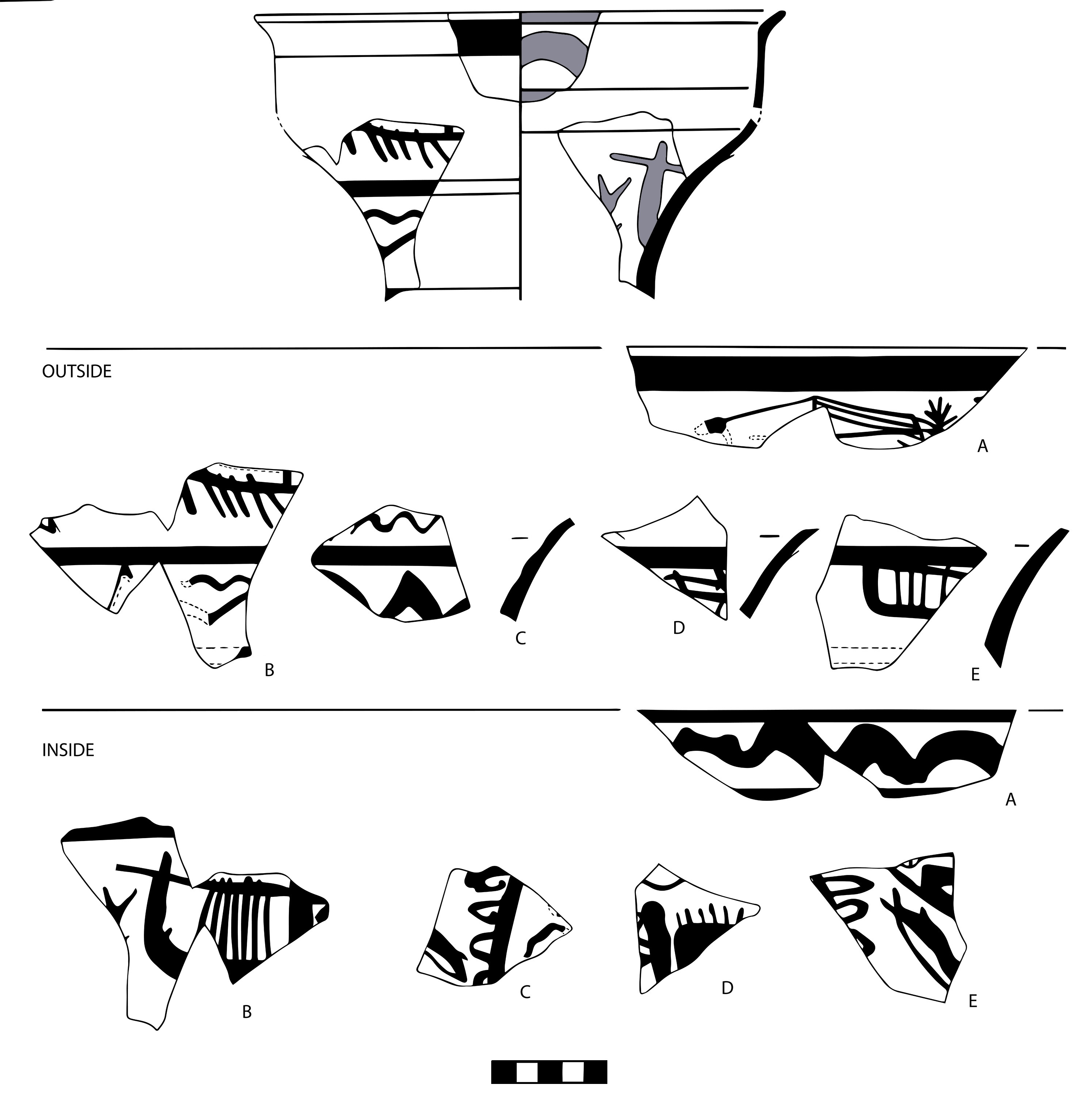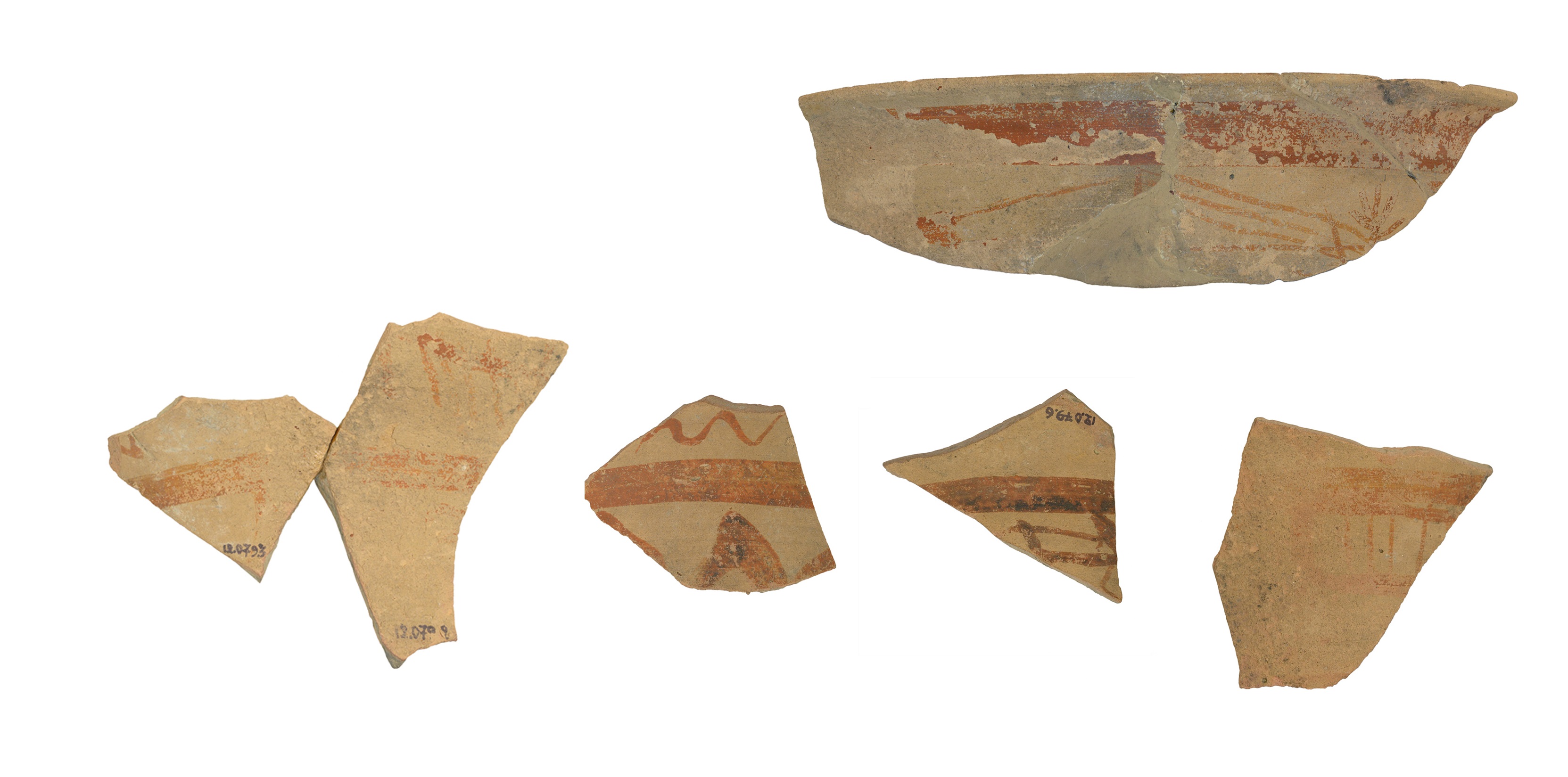Outside sherd A: Lip figment below a thick decorative band. Only parts of the post, mast and rigging are preserved. Ship to the left. Vertical stempost ending in a zoomorphic figurehead with a seemingly downward-pointing snout and an ear. Vertical sternpost ending in a palmette-shaped decorative device. Mast amidships. The rigging comprises one forestay and three lines running from the mast's tip to the sternpost (backstays or one backstays and two halyards brought back to the helmsman's position). The horizontal line situated at the level just below the posts' decorative devices is probably a lowered yard given the absence of a second parallel line. The upper part of the quarter rudder survives, rendered as a simple thin line.
Outside sherd B: Lower body fragment, ship above a decorative line with zig-zags below it. The beginning of the handle can be made out on the left side of the sherd. Lower part of a ship facing right. Keel line that begins to curve slightly towards the stern. Crossing the hull are five oars, with the quarter rudder visible on the left-hand edge. The base of the mast survives. Remnants of a horizontal line along the top edge of the sherd possibly represent the gunwale.
Outside sherd D: Lower body fragment, ship (?) below a decorative line. Top of the mast with stays on each side.
Outside sherd E: Lower body fragment, possible ship below a decorative line. Flat keel line curving up to meet the gunwale. Four vertical parallel lines create five "rooms."
Inside sherd B: Lower body fragment, possible ship representation below a decorative line. Flat keel line curving up to a vertical post, probably the stern. The base of the mast is still visible. Horizontal line (probably the gunwale but possibly a deck) connected to the keel line by 7 closely spaced vertical parallel lines creating rooms (?). Mountjoy alternatively reads them as struts supporting the deck. To the left of the ship is an element that is probably a fish tail.
Inside sherd D: Lower body fragment. Irregular vertical post (stem ?) with two nondescript lines departing to the left. To the right there is a dark, roughly rectangular mass with six vertical parallel strokes on top.
Inside sherd E: Lower body fragment. Problematic reading as a ship. To the left there is an oblique line with three loops. There is probably a fish in the center, represented by a thick undulating line crossed by a thinner curving one. In the upper right corner is an oblique line joined by a thicker horizontal line above it.





